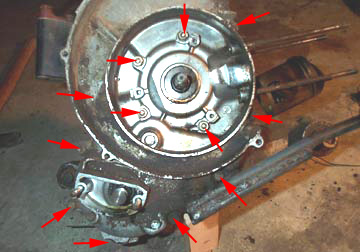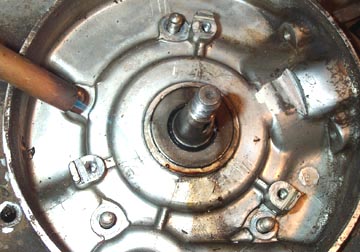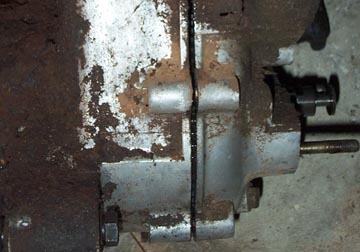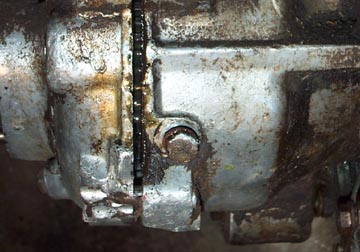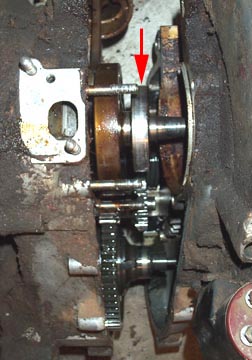 |
 |
 |
 |
 |
 |
 |
||||||||||||
Vespa Pre 1979 Large Frame Engine WorkSplitting the Casings |
Older Vespa Engine Casing SplitThis is a very similar process to the post 1979 Vespa large frame casing split page except for one very important aspect. The flywheel side bearing on older motors was not different than the clutch side bearing. Where newer motors have a two piece roller type bearing on the flywheel side to make the split easier, older motors have two identical bearings that fit very tightly in the casings. To start you need to:
Using an 11mm socket, remove the casing nuts everywhere an arrow is shown above. The lowest one on the case has the nut facing the rear wheel.
The only way to get the flywheel bearing to release is to heat the aluminum casing around it with a hair dryer or blowtorch in order to make it slightly expand. This expansion slightly releases its grip on the flywheel side bearing and will allow you to get the casings apart. Be careful not to superheat the casings as the flywheel side oil seal is a made from rubber and could be damaged. Usually just hot enough to hold on to is fine. Rotate the heat source around the circular area where the crank protrudes, but NOT where the steel and metal oil seal is visible.
Slowly start pulling the casings away from each other. The kickstart is a handy lever to use when wrestling the casings apart. Don't try to pry the cases apart with anything or you could damage the sealing faces and cause an oil or air leak in the future.
The casings should be starting to come apart now. If they are really stubborn you can softly tap around the perimeter with a rubber mallet (not a hammer) to help out.
Finally the flywheel side should come free. You will see the bastard bearing (red arrow) that has been holding on to the casing still stuck to the right hand side of the crank. Sometimes it will stick in the casing and sometimes (more often) it will remain on the crank as shown. Since the clutch is still in place on this bike there is no possibility of the crank ending up coming out with the flywheel side. |
|||||||||||||||||
